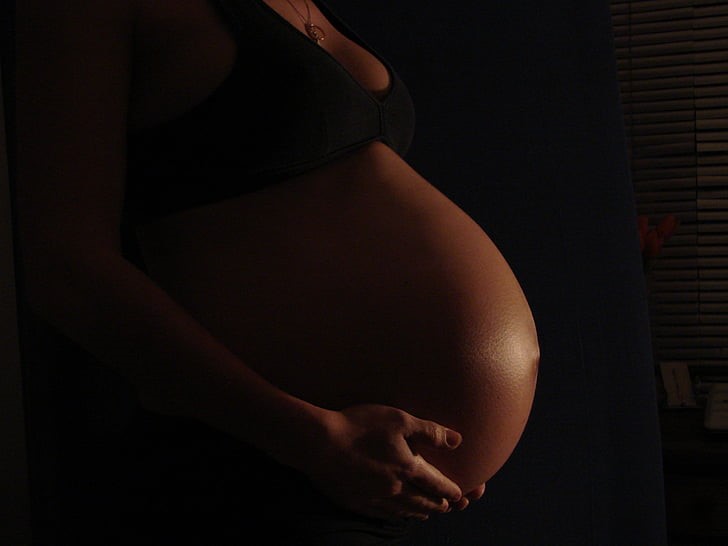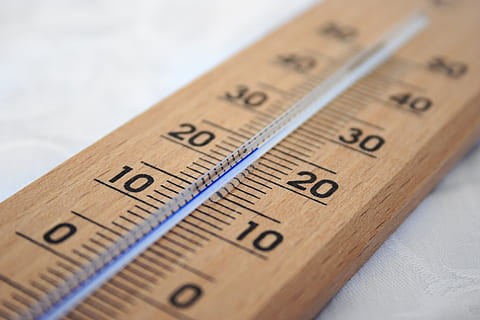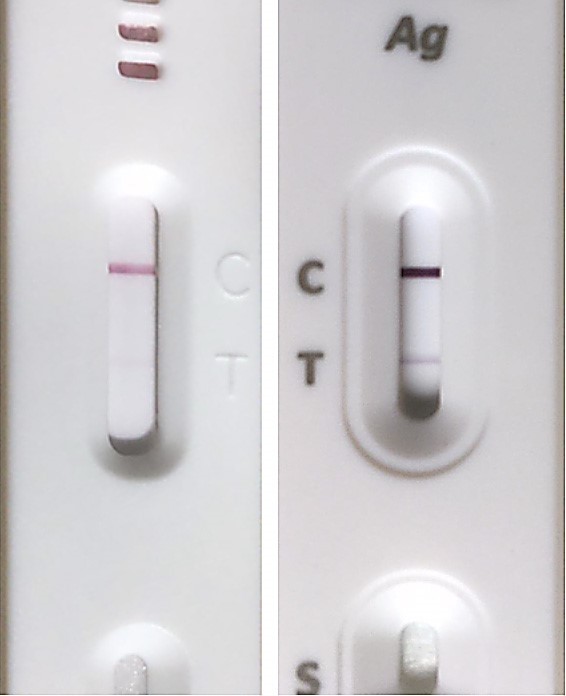How To Determine Your Fertile Window For Pregnancy: A Guide for African Women
By: Blessing Obialor. Freelance Health Writer and Datelinehealth Africa (DLHA) Volunteer. Medical review and editorial support was provided by the DLHA Team.

Side view of a partially unclothed black pregnant woman with exposed belly.
Your fertile window will be 5 days before ovulation, the ovulation day and one day after. This totals 7 days. Assuming a 28 days cycle with ovulation occuring on day 14, your most fertile days will be days 12, 13 and 14 of your menstrual cycle.
You can't get pregnant every day of your life. But do you know that there are 5 special days in your monthly cycle during which you have the highest cance of getting pregnant?
Many couples desire to have their own children within a year or more of marriage. It becomes a source of worry when efforts prove abortive.
This frustration can be handled by understanding the fertile window.
This article will discuss the fertile window, how to determine it and facts concerning your fertility. The article will also answer questions such as:
Let's start with defining fertility. Fertility is defined as the ability to conceive and have children. A window is a space. Putting the two together, the fertile window is a space of time in the menstrual cycle where a woman is most likely to conceive.
For women this is a six day period, starting five days before ovulation and the day of ovulation.
To understand the fertile window you need to have a good grasp of the menstrual cycle.
An average cycle lasts for 28 days, and ovulation occurs midway; which is on the 14th day. Ovulation is marked by the release of an egg which stays viable for 24 hours.
Since the male sperm survives for 5 days, it is possible for a woman to get pregnant within the fertile window. Even if the sperm was released on the 3rd day of the fertile window, it can still survive till the day of ovulation.
Therefore the life span of the sperm and egg plays a huge role in determining the timing for intercourse.
Nothwithstanding that the sperm can survive for 5 days in the womb, the most appropriate day to get pregnant within the menstrual cycle is determined by the viability of the female egg. This lasts only 24 hours following ovulation and the viability reduces every one hour.within that 24 hour period.
Therefore if you plan to conceive, the best time for intercourse is on or close to your ovulation date. If done, the sperm waits for the egg and fertilises it immediately it is released.
So, how can you know when the egg is released?
Ovulation is defined as the release of a matured follicle from the ovum into the Fallopian tube where it awaits fertilisation. This period is a major part of the fertile window as the woman is more likely to get pregnant if the egg is fertilised by the sperm. So, let’s take a look at the different methods of tracking the fertile window and also ovulation.
Before then, here are some physical indicators that help a woman to determine that she is ovulating.
There are different methods of determining when you ovulate. In this article we'll discuss four major methods that include:
![]()
Calendar for tracking the menstrual cycle.
This method involves using a calendar or an app to monitor your cycle. You mark out the day your menstrual cycle begins then count to the day you see your next menstruation.
The number of days in-between is your cycle length. You should calculate your cycle length over six consecutive times before concluding on the length.
An example of how to calculate your fertile window will be as follows:
Assuming your average menstrual cycle is 28 days, your ovulation will likely occur on either the 12 or 14th day of your cycle. So, your fertile window will be 5 days before ovulation, the ovulation day and one day after. This totals 7 days. In this scenario, your most fertile days are days 12, 13 and 14.
Note that this method isn't effective for those who have varying cycle length.

`A thermometer inlaid on wood
During ovulation basal body temperature increases by 0.5 F. Basal temperature is recorded immediately when you wake up before getting out of bed. This should be done throughout the menstrual cycle. Record daily temperature and take note of the spike in temperature. The spike in temperature signifies that ovulation has taken place.
Ensure you rule out any infection before using this method, this is because an infection can lead to a fever evidenced by a spike in temperature.
This method isn't adequate for birth control because when you record a spike it indicates that ovulation has already occurred.
Demonstration of cervicalmucus on the fingers. Click on the image to enlarge.
During the menstrual cycle the cervix produces a watery, variably slippery, stretchy and tacky mucous like secretion depending on the phase of the fertile window. The consistency changes across different phases.
During ovulation the secretion becomes more slippery, this allows for smooth entry of the sperm into the ovum.
You start by recording the consistency of your cervical mucus over three months. This is to establish the consistency before you begin using it as a method of determining ovulation.
However cervical mucous tracking is not an effective method of determining ovulation because a number of other factors like hormonal contraceptives, breastfeeding, etc., have an impact on the consistency of cervical mucus.

An Ovulation predictor kit
These kits are helpful for people with a regular menstrual cycle. You just need to take a test using your urine. The test kit measures the amount of luteinising hormone in urine. Usually ovulation occurs 24 hours after this spike.You are free to have sexual intercourse within the 24 hours.
This method isn't effective for individuals who have irregular periods.
Irregular periods make it difficult to determine your ovulation day.
If your menstrual cycle is more than the usual length by 7 days or if the interval between the two exceeds 21 to 35 days, It may be as a result of hormonal imbalances or bodily changes. You need to visit your healthcare provider for a complete check.
As much as timing the fertile window improves the likelihood of pregnancy, other factors contribute to the success of pregnancy efforts. These factors include the following:
There is a famous saying that we are whatever we eat. This also applies to fertility. According to specialists, a body mass index below 18.5% decreases the likelihood of getting pregnant. Also women with a BMI over 30 are less likely to ovulate. This influences ovulation thereby leading to irregular menstrual cycles. Therefore you must ensure you eat a balanced diet, and include fruits e.g berries which are rich in antioxidants.
Heavy alcohol drinking reduces the likelihood of getting pregnant. This is because it reduces the ability to ovulate normally.
This applies for women of a healthy weigh. Excessive exercise reduces progesterone levels thereby decreasing the woman's ability to ovulate.
Different studies have shown a relationship between increased stress, anxiety, depression and infertility. For example, women whose saliva had high levels of alpha-amylase, an enzyme that marks stress, took 29% longer to get pregnant compared to those who had less. Further research discovered that stress hormones such as cortisol lead to increased weight, which in turn influences ovulation and the chanes of conceiving. .
5. Supplements
The reproductive organs (testicles in males, and ovaries in females) play a vital role in maintaining fertility. These organs require a good supply of nutrients, oxygen, and hormones. Supplements help to improve the viability of the egg and the sperm. These supplements should be taken based on your doctor's prescription.
So, if you desire to conceive at the earliest possible time after your marriage, it's important to put more effort in accurately timed intercourse. There are methods if correctly practised that are helpful for contraception. It is advisable to combine all the three methods discussed above in order to get optimal results.
1. Hertility. Alcohol and Fertility: Drinking while trying to conceive - Fertility Health. Internet. 2023 .June 20]. Cited April 27, 2024. Available from here:
2. Hammarberg K. How does overweight affect my fertility? [Internet, n,d,]. Cited April 27, 2024. Available from here:
3. Better Health Channel. Department of Health & Human Services. Weight, fertility and pregnancy health. [Internet. Reviewed 2023 Oct. 11] Cited April 27, 2024. Available from here.
Recommended Reading::
Demystifying the menstrual cycle for African women
12 Frequently Asked Menstruation Questions and Answers for Africans to Know
Published: May 06, 2024
Updated: June 24, 2025
© 2024-2025. Datelinehealth Africa Inc. All rights reserved.
Permission is given to copy, use and share content for non-commercial purposes without alteration or modification and subject to source attribution.
DATELINEHEALTH AFRICA INC., is a digital publisher for informational and educational purposes and does not offer personal medical care and advice. If you have a medical problem needing routine or emergency attention, call your doctor or local emergency services immediately, or visit the nearest emergency room or the nearest hospital. You should consult your professional healthcare provider before starting any nutrition, diet, exercise, fitness, medical or wellness program mentioned or referenced in the DatelinehealthAfrica website. Click here for more disclaimer notice.